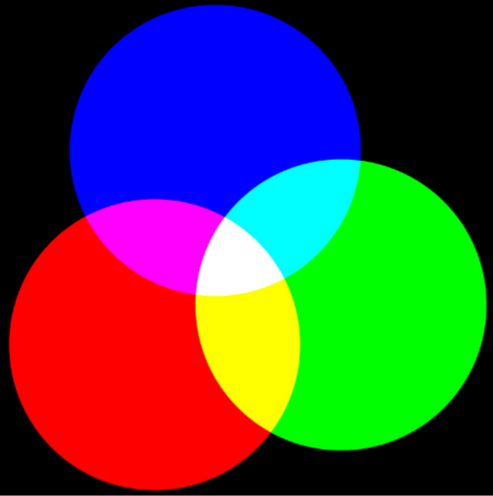A whole new world of color
What are the primary colors? I’ll even give you options: A) red, yellow, and blue; B) magenta, yellow, and cyan; or C). red, green, and blue. This isn’t a fair question as technically all three are correct, but in different circumstances.
A correct color wheel, with cyan, yellow and magenta as the primary colors
We are taught that red, yellow, and blue are the primary colors. When we are learning art in kindergarten or elementary school, we are told that these three colors can be combined to make any other color. We learn that the primary colors cannot be made from any other color. We are taught this because it is what has always been taught, and be used to believe it was true. However, we now have a better understanding of color and light. Essentially, you were unintentionally lied to as a child.
When you are talking about paint, markers, or other pigments, magenta, yellow, and cyan are the true primary colors. Although cyan is close to blue and magenta is close to red, they are not the same colors. In addition, red and blue can be made from the CYM primary colors.
As you can see, red can be made from a combination of magenta and yellow. Blue can be made from a combination of cyan and magenta. The primary colors we learn about in school are actually a primary color and two secondary colors. If you have a magenta and a yellow marker, you can combine them to make a red, and it can even be brighter than a red marker.
Cyan, Yellow, and Magenta are important colors, and some people don’t even know what they are. Some people might call magenta purple or pink and cyan a light blue. People are not taught the language they need to talk about colors. Any color can be made using cyan, yellow, magenta, and white.
A printer has four different color cartridges: cyan, yellow, magenta and black. As you can see in the color wheel, black can be made with all three colors, but it is easier for the printer to use black when printing images. Usually, the paper is white, so to get a lighter color, the printer will use less ink to make a lighter color.
That being said, sometimes cyan, yellow, and magenta are NOT the primary colors. They are the secondary colors for light. Light and color are actually electromagnetic waves, and the different colors are different frequencies of light. Red light is small waves, green is medium, and blue is big waves. If you get smaller than red, it becomes infrared light. If you get larger than blue, it becomes ultraviolet.
Color as wavelengths
White light is the combination of all colors and can then be separated into other colors. If you have a red, green, and blue light and shine them in the same spot, you will create white light. Where the green and blue overlap, you will create cyan; where the green and red light overlap, you will create yellow; and where the red and blue overlap, you will create magenta. You can think of light as being the opposite of pigment. Black is the absence of all color with light and the combination of all color with pigment.
Light Color Wheel with Red, Green, and Blue being the primary colors
The eye is made up of three cones, each made to receive the primary colors of light. If you see someone wearing a red shirt, the shirt is reflecting the red light into your eye, while the other colors are absorbed into the shirt. As the primary colors for light, red, green and blue were used to make old technology. Computer monitors and tvs used to be made by tiny RGB light pixels, which would create all of the colors shown on the screen. Some LED strips still use RGB to create rainbow colors.
Though we can see magenta, and it is, in some contexts, a primary color, it is not technically real. Magenta is not a real color because it does not have it’s own wavelength. If the red cone in our eye is firing, we see red. If both the red and green cones are firing, we see yellow. If both the green and blue cones are firing, we see cyan. When two cones fire, we see the color that is made by the two combined. However, with the light waves, green is in the middle of blue and red. If both the red and blue cones fire, without the green firing, the brain makes up the color magenta. That is one of the reasons why there are very few naturally purple plants.
Color is weird and confusing, and this is not helped by a flawed education system that fails to teach kindergartners the true primary colors. Color is one of the ways humans perceive the world, and yet we are taught color theory incorrectly. If there is one thing you remember from this article, I hope it is that the sky is not blue. It is cyan.









